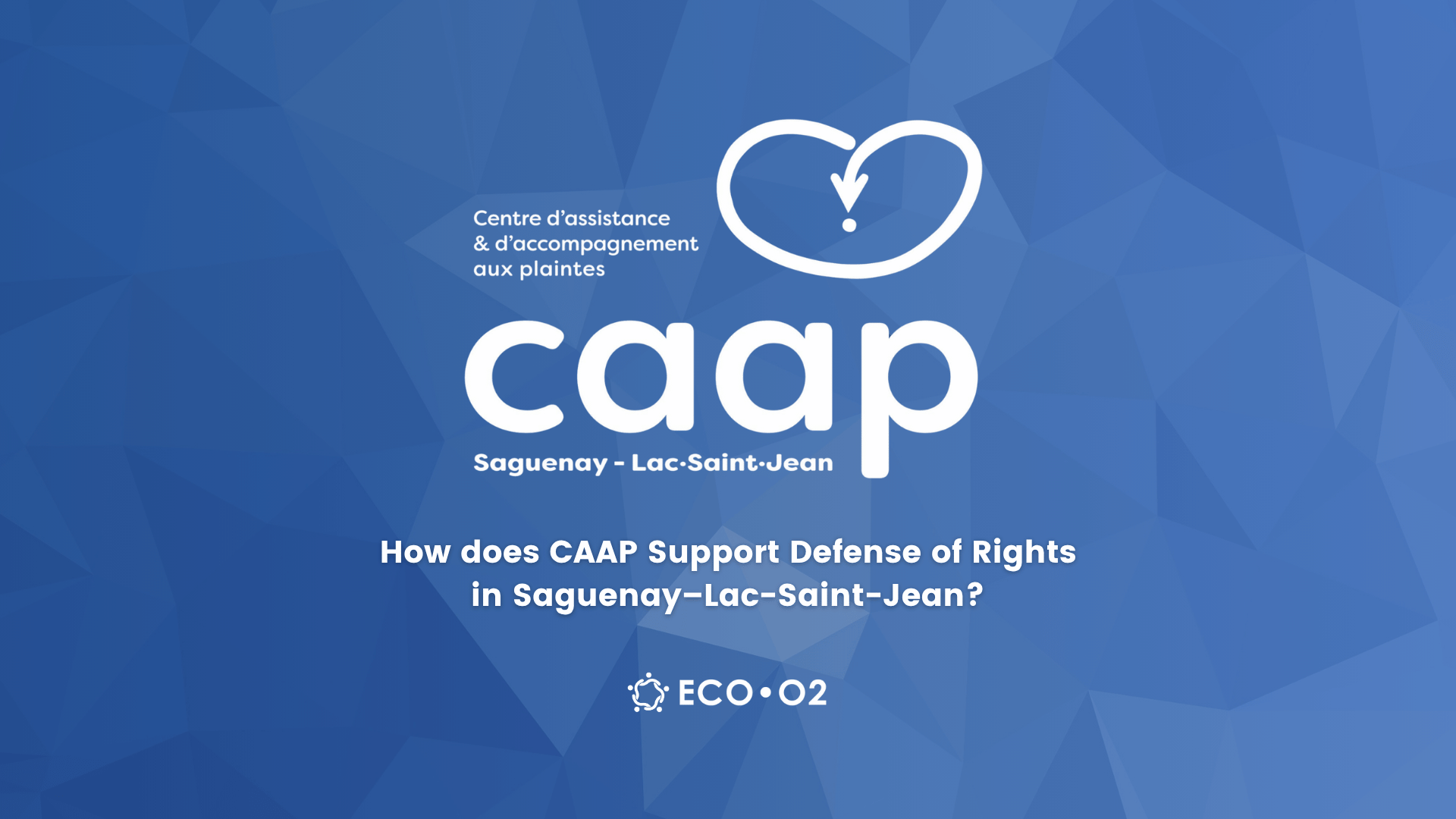Speaking Up: How CAAP Supports the Defense of Rights in Saguenay–Lac-Saint-Jean
Navigating the health and social services system can be challenging, especially when concerns arise about the quality of care or services received. In the Saguenay–Lac-Saint-Jean region, the Centre d'assistance et d'accompagnement aux plaintes (CAAP) is a vital resource that helps ensure people’s rights are respected and heard.
Did you know that you have rights as a user of the public health system?
Users of the health and social services network have 12 specific rights recognized by the Act respecting health services and social services. It is the responsibility of the local health network to uphold these rights.
One of those rights is the right to receive services in English.
What is CAAP?
Founded in 1993, CAAP Saguenay–Lac-Saint-Jean is a regional community organization mandated by the Quebec Ministry of Health and Social Services. Its primary mission is to help and support people who are dissatisfied with the services received from the health and social services network. Since 2019, CAAP has also assisted tenants of private seniors’ residences (PSRs) in resolving disputes related to their leases.
What Can CAAP Do?
CAAP offers a range of services in both official languages to make the complaint process easier:
Information and guidance: Informing people about their rights and the procedures for filing complaints.
Personalized support: Offering empathetic listening and assistance tailored to each individual’s situation.
Help writing complaints: Assisting in clearly and effectively expressing concerns.
Support throughout the process: Accompanying individuals at every step, from the initial complaint to its resolution.
All services are free, confidential, and designed to empower people to stand up for their rights effectively.
The Complaint Process
First point of contact: People can reach out to CAAP by phone or email to discuss their concerns (contact details at the bottom of this post).
Assessment and guidance: CAAP professionals assess the situation, provide information on rights, and guide individuals toward appropriate recourse.
Drafting the complaint: If needed, CAAP helps draft the complaint to ensure it accurately reflects the person’s concerns.
Submission and follow-up: The complaint is submitted to the appropriate authority, such as the Complaints and Service Quality Commissioner. CAAP continues to offer support throughout the process, including necessary follow-ups.
If the complaint involves a health professional, it is handled by the Complaints Commissioner; however, if it involves a doctor, it is reviewed by a medical examiner. If the person is not satisfied with the outcome, the complaint can be escalated to the Québec Ombudsman (Protecteur du citoyen) or the establishment’s Review Committee.
The CAAP team (from left: Josey, Rebecca, Alysson, Audrey, Frencois)
Support for Tenants of Private Seniors’ Residences
For tenants of private seniors’ residences (PSRs), CAAP offers specialized support for resolving lease-related issues and living conditions.
This includes help with disputes involving landlords and ensuring tenants' rights are respected.
Why File a Complaint?
Some people may hesitate to file a complaint because they fear it won’t lead to real change, they worry about retaliation, or they simply don’t want to cause trouble. But filing an official complaint is an important way to make your voice heard—especially when it comes to issues like not receiving services in English.
When several people report the same problem, it creates a record that health and social service institutions are required to acknowledge. This kind of pressure can lead to real improvements, such as better language services or staff training. Your complaint not only defends your rights—it helps build a more responsive and inclusive public system for everyone.
Examples of Complaints
Lack of service in English:
You or a loved one were unable to receive essential health or social services in English, even after requesting them (e.g., at a hospital or CLSC).Poor quality of care:
You or someone close to you received substandard care in a public facility, such as neglect in a long-term care home or inadequate medical treatment.Disrespectful or discriminatory treatment:
You or a loved one felt treated rudely, dismissed, or discriminated against based on language, culture, or background.Long wait times:
You faced unreasonably long delays in accessing services like mental health support, rehabilitation, or surgery.Denied access to services:
You were refused a service you were entitled to, such as home care, psychological support, or assistance from a social worker.Lack of informed consent or communication:
You or a loved one were not properly informed about medical procedures, medications, or diagnoses and couldn’t get answers to your questions.
CAAP in action.
How to Contact CAAP
Visit CAAP’s website at plaintesante.ca for more information—it’s available in English!
You can also reach CAAP by phone at 418-662-6774 (toll-free: 1-877-767-2227) or by email at info@plaintesante.ca.
CAAP Saguenay–Lac-Saint-Jean has offices in Alma and Chicoutimi:
Alma Office: 414 Collard Ouest Street, Alma, Quebec G8B 1N2
Chicoutimi Office: 15-927 Jacques-Cartier East Street, Chicoutimi, QC G7H 2A3
Additional Resources
Feeling nervous about filing a complaint?
Don’t worry! ECO-02 can help you find the right person to talk to and support you in communicating with CAAP so you feel confident submitting your complaint.
Don’t forget—you can stop by the ECO-02 community center to pick up a free fridge magnet designed by ECO-02 and CAAP in partnership with the CIUSSS Saguenay–Lac-Saint-Jean. It's a reminder of your user rights and how to contact CAAP.
No time to drop by? Visit our Tools & Useful Links page to download a digital copy today!







